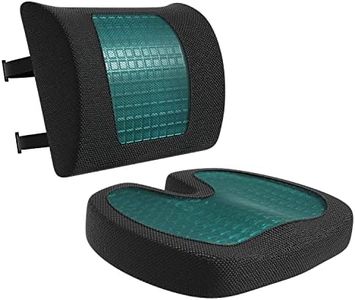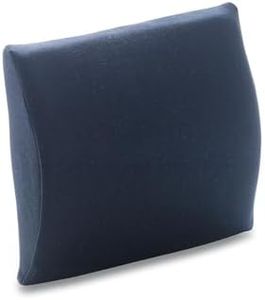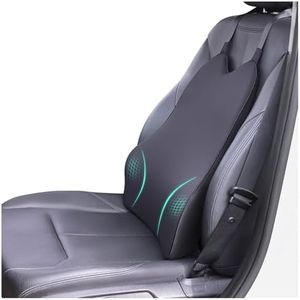We Use CookiesWe use cookies to enhance the security, performance,
functionality and for analytical and promotional activities. By continuing to browse this site you
are agreeing to our privacy policy
10 Best Lumbar Cushions
From leading brands and best sellers available on the web.Buying Guide for the Best Lumbar Cushions
Choosing the right lumbar cushion can make a big difference in your daily comfort, especially if you spend long hours sitting. The goal is to find a cushion that provides enough support for your lower back (lumbar region), helps maintain proper posture, and suits your body shape and seating environment. Since everyone has different needs and preferences, it's important to understand the main features of lumbar cushions and decide what will work best for you.MaterialThe material of a lumbar cushion determines both its comfort and durability. Common materials include memory foam, standard foam, gel, and fiber fillings. Memory foam is popular because it molds to your body and provides personalized support, while gel can keep you cooler during long sitting periods. Fiber and standard foam are softer or less expensive, but may offer less support over time. When picking the right material, think about how much support you want, your sensitivity to heat, and whether you need the cushion to hold its shape for many hours each day.
Shape and ContourShape refers to how the cushion is designed to match the natural curve of your lower back. Some cushions are flat with a slight bulge, while others have pronounced curves or even cutouts for extra support. More contoured cushions provide firm guidance for your spine, which is helpful if you have existing back pain or need postural correction. Flatter cushions are suitable if you want a gentle boost. Think about your current back health: if you frequently feel pain or slouch, consider a more ergonomic, contoured shape.
Size and ThicknessLumbar cushions come in various sizes and thicknesses, affecting how much space they take up on your chair and how much support they provide. Thicker or larger cushions offer more pronounced support, which is ideal for larger frames or deep-seated chairs. Smaller, thinner cushions work better if you have a compact chair or want only mild support. Measure your chair and consider your body size before choosing; a well-fitted cushion should support your lower back without feeling bulky or pushing you too far forward.
Attachment MechanismMany lumbar cushions come with straps, buckles, or elastic bands to keep them in place on your chair. This is especially important if you plan to use the cushion on different seats or move around a lot. Cushions without attachments might slip or require frequent readjustment. If your chair is non-standard or you'd like to use the cushion in cars or airplanes, check for adjustable or versatile attachment options. Choose this feature based on your lifestyle: do you need a cushion that's portable and easily secured, or will it stay in one place?
Cover Fabric and WashabilityThe fabric used on the outside of a lumbar cushion affects how it feels against your body and how easy it is to clean. Breathable covers like mesh or cotton help keep you cool, while plush or velour fabrics feel softer but may be warmer. Washability is important for hygiene, so removable, machine-washable covers are very convenient if you use the cushion daily or in hot climates. Think about your preferences for comfort and your willingness to maintain the cushion; if you sweat easily or eat at your desk, prioritize removable and washable covers.
FirmnessFirmness describes how hard or soft the lumbar cushion feels when you press against it. Softer cushions offer gentle support and greater comfort for short periods, while firmer cushions provide strong, consistent support better for posture over many hours. People with more severe back issues typically benefit from firmer cushions, while those using the cushion only occasionally or for light relief might enjoy a softer feel. Try to match the firmness to both your comfort preference and the level of support your back needs during daily activities.
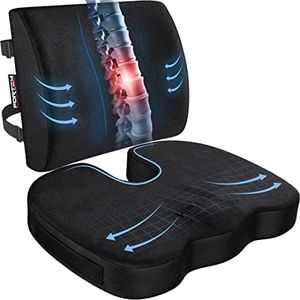
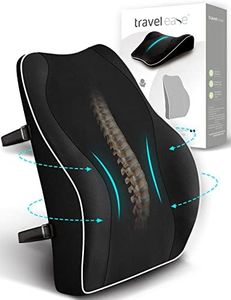


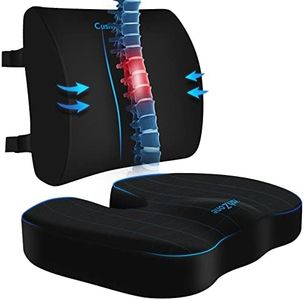

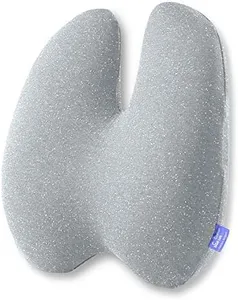
![SAMSONITE, [Mid-Low] Back Support Lumbar Pillow for Office Chair or Car Seat, [HIGH Grade - Memory Foam], Boost Your Back Comfort Zone, Versatile Use Supportive Cushion with Soft Plush Cover](https://images-proxy.bestreviews.guide/zsuOqWtQMjtSdqWLbe6ICdcv2C8=/0x300/https://m.media-amazon.com/images/I/41XHvBk4wfL._AC_CX679_.jpg)
